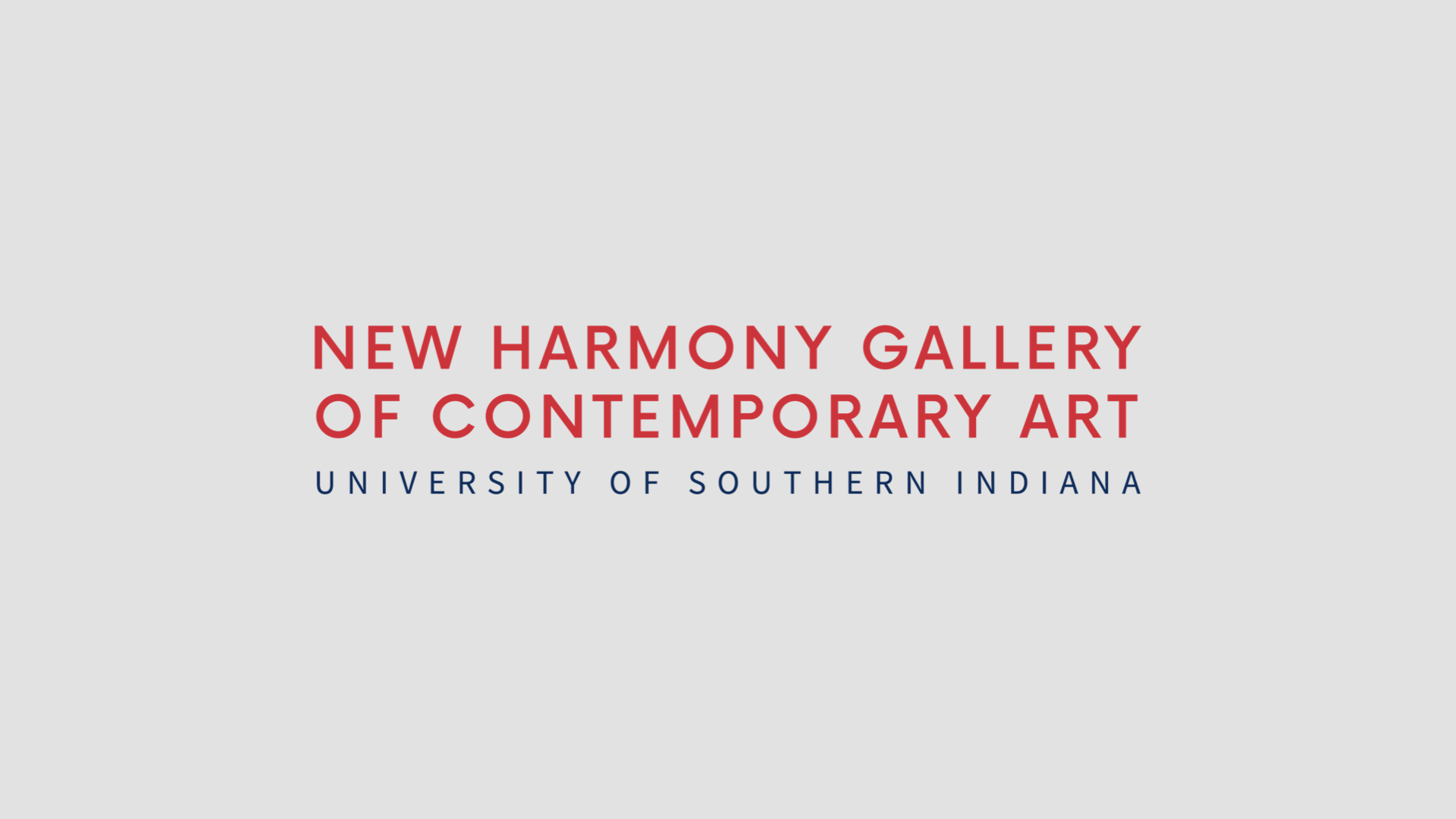
Opening Reception with artist-led tour on Saturday, January 10 from 3-5 p.m. CT
Virtual Artist Talk with Sarah G. Sharp on Friday, February 13 at 12 p.m. CT
Zoom link: https://usi.zoom.us/j/99825146984
New Harmony Gallery of Contemporary Art, University of Southern Indiana proudly presents 'And the thorns were cleared from the path...' a solo exhibition by artist Sarah G. Sharp. The gallery will host an opening reception on Saturday, January 10 from 3-5 p.m. at 506 Main Street.
In researching for the exhibition, Sharp was able to compare and coalesce aspects of life along the Wabash River in the 1800s, inclusive of native and cultivated plant life, textile and embroidery during this early period of Indiana history and entrepreneurial spirit present in the times of early settlements by Harmonist, then later, Owen-Maclure and so called 'Afterglow' residents of present-day New Harmony, Indiana. The shared themes of communal living and a cooperative spirit among residents of earlier Indigenous periods in the region, as well as among Father Rapp's Harmonie Society settlers and the subsequent Owen-Maclure group (celebrating its Bicentennial in 2025-26,) Sharp draws from these disparate residents' ability to live in harmony with the land and draw from the natural environment and approaches to craftsmanship to produce a range of home goods, clothing and crafts.
Sharp observes, "In this exhibition, I am showing a series of new work with select illustrations of plant life connected to women’s labor and lives from different phases of New Harmony’s timeline, including plants harvested and cultivated before and during the settler colonial era by native peoples; plants cultivated during the Harmonist period; and plants harvested, cultivated and imported during the Owen-Maclure and 'afterglow' periods. I adapt these drawings into hand and machine embroideries and tapestries that reference textile works found in the Working Men’s Institute Archives and a series of silk scarfs inspired by descriptions of traditional Battenberg accessories worn by Harmonist women and silk designs produced by Gertrude Rapp found in the USI - Historic New Harmony collection.
New Harmony’s well known histories of powerful women are a well preserved, important backdrop to this body of work providing the space, in many ways, for the work of lesser known regional women to be preserved. During my visit to NH in March 2025, I was able to spend time with a few specific textile items from the Working Men’s Institute collection, while at the University of Southern Indiana's Historic New Harmony collection I saw several Gertrude Rapp Silks themed with floral patterns, and was able to access Minerva society documents that helped me to form these ideas.
Pivoting to the Minerva Society, in her 1904 letter to the editor of The Woman’s Journal, a weekly Boston-based suffragette newspaper, Society participant Ella M. Dietz Glynes, (neé Ella Clymer, the youngest recorded member of the Minerva Society) addressed the fact that the Minerva society was founded before the Sorosis Society of New York-- a society which was often heralded as the first official Women’s Club in the US. Rather than complain, she addresses the importance of the Sorosis Society’s large public platform to “establish the right of assemblage” for women. She wrote:
'The announcement that a band of women in New York had gathered together to form a society of their own was received with ridicule and scorn. However many clubs may have preceded it, none have familiarized the public mind with the idea that women could successfully organize. Many were the predictions of speedy dissolution…. Ridicule and obluquy, however, were born with patience and lived down. The way was made plain for others. The thorns were cleared from the path.'
I found her the cooperative acknowledgement that time and persistence and many types of representation are of this more “famous’ society were particularly salient earthly metaphor of “clearing thorns from the path," and considered ways in which this exhibition can participate in a continuum that embraces this cooperative and generative spirit."
About Sarah G. Sharp
Sarah G. Sharp is an artist and curator whose interests include alternative social histories, language, place, technology and craft. She is the recipient of MacDowell Fellowship, Getty Library Research Grant, Brooklyn Arts Council Grant, BRIC Arts Media Fellowship, Bronx Museum AIM Fellowship and residency awards at the Museum of Contemporary Art, Tucson, SoHo20 Gallery Residency Lab, Brooklyn, Textile Art Center, NY and The Vermont Studio Center. Exhibitions include The Aldrich Museum and Real Art Ways in CT, Hampden Gallery at UMass Amherst, LMAK Gallery and Field Projects Gallery in NYC. Sarah’s Oral History Interview with artist Elaine Reichek was published by the Archives of American Art at the Smithsonian Institute. She is the founder of The Tool Book Project, a multi-modal art project that provides a direct action platform for artists to share their work and raise funds for non-profit groups. Sarah holds an MFA in studio art and an MA Modern and Contemporary Art, Criticism and Theory from Purchase College, SUNY. She is an Associate Professor and Graduate Program Director for the Intermedia and Digital Arts MFA program at the University of Maryland, Baltimore County and faculty in the MFA in Art Practice program at SVA in New York. Sharp lives and works in Brooklyn and Baltimore.
New Harmony Gallery of Contemporary Art at University of Southern Indiana promotes discourse about and access to contemporary art in the southern Indiana region. New Harmony Gallery of Contemporary Art is a proud outreach partner of the University of Southern Indiana
This exhibition is made possible in part Arts Council of Southwestern Indiana, and the Indiana Arts Commission, which receives support from the State of Indiana and the National Endowment for the Arts.
